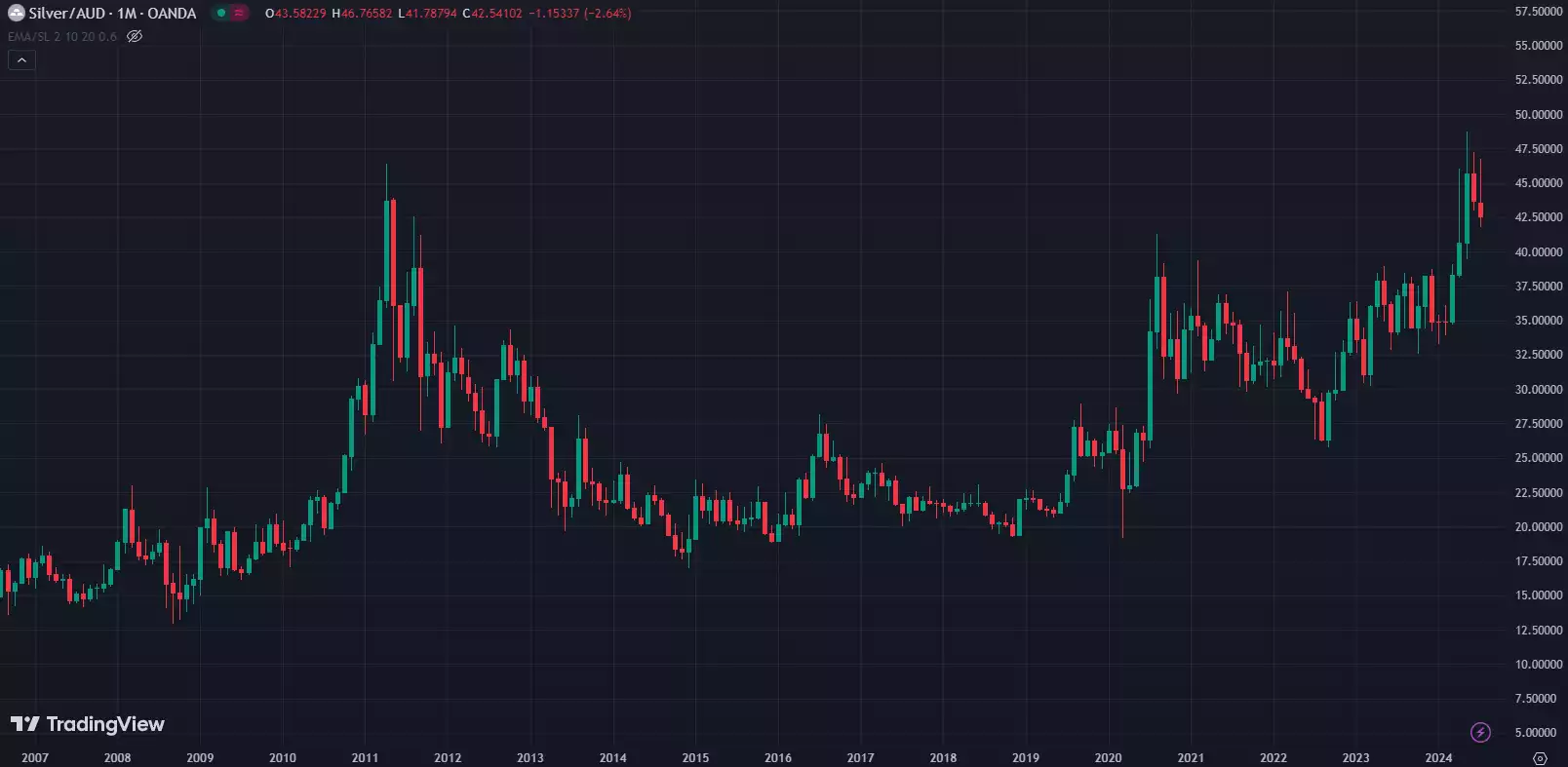Silver Price Suppression, An American Classic
News
|
Posted 30/07/2024
|
11659
It’s common within the silver investing community to hear about the possible manipulation and suppression of the silver price by the powers that be. In today’s article, we look at the shady relationship between significant actors within the space that raise some concerns.
The silver market’s behaviour raises suspicions. Particularly, the role of JPMorgan Chase, a major player in silver through its physical holdings and its position as the custodian for the silver ETF (exchange traded fund), SLV.
JPMorgan Chase’s involvement in the silver market has long been contentious. Over the past decade, the bank has admitted to five felonies and paid over a billion dollars in fines for various offences, including a US$920 million fine for manipulating the precious metals markets. Despite the bank’s public denials, suspicions persist that JPMorgan is manipulating silver prices.
The roots of silver market manipulation may go deeper than JPMorgan Chase. The U.S. government has been implicated in controlling silver prices since 1965, when President Lyndon Johnson signed the Coinage Act, removing silver from U.S. coinage. Johnson explicitly warned against hoarding silver, asserting the Treasury would maintain control over its price. Despite this, silver coins were hoarded, and their value soared with inflation.
“If anybody has any idea of hoarding our silver coins, let me say this. Treasury has a lot of silver on hand, and it can be, and it will be used to keep the price of silver in line with its value in our present silver coin. There will be no profit in holding them out of circulation for the value of their silver content.”
- President Lyndon Johnson, 23rd July, 1965.
JPMorgan Chase’s deep ties with the U.S. Treasury have fuelled suspicions of government manipulation. When SLV launched in 2006 with JPMorgan as custodian, it sparked concerns about possible government involvement in the ETF. These suspicions intensified when JPMorgan executives, including CEO Jamie Dimon and commodities head Blythe Masters, publicly denied manipulating the market, insisting their trades were client-driven and neutral.
However, during the trial of JPMorgan traders convicted of “spoofing” the metals markets, it was revealed that central banks, including the U.S. government, were significant clients of JPMorgan, holding large amounts of gold and silver in the bank’s vaults. This disclosure highlighted the potential for governmental influence in the metals market.
Moreover, the CME Group, which operates major U.S. futures exchanges, offers trading discounts to governments and central banks through its Central Bank Incentive Program. This program underscores the substantial role these entities play in the futures markets, raising questions about the transparency and fairness of these trades.
The U.S. Treasury’s Exchange Stabilisation Fund (ESF), authorised by the Gold Reserve Act of 1934, allows for secret market interventions worldwide. This capability, combined with the Commodity Futures Trading Commission’s (CFTC) reluctance to clarify its oversight of government-driven manipulative trading, points to a murky realm of potential market control.
By amassing a significant hoard of silver and acting as custodian for SLV, JPMorgan Chase might be facilitating government interventions in the silver market. This possibility raises further questions about daily operations at the Federal Reserve Bank of New York’s trading desk, which remains opaque to the public.
The involvement of the Bank for International Settlements (BIS) in trading monetary metals for the U.S. government also adds complexity. In 2005, William R. White, then head of the BIS’s monetary and economic department, stated that central banks cooperate to influence asset prices, including gold and potentially silver. This admission suggests coordinated efforts to manage the precious metals markets.
The “why” of manipulation is hard to answer with a high degree of certainty. It may be because the U.S. government wants to keep silver at an affordable price to use for current and future industrial needs like electronics, green energy technology and military technology. On the other hand, it could be an effort to dissuade people from considering it as an alternative money to fiat currency.
The disparity between silver and gold prices involves a web of financial institutions, government policies, and central bank activities, and the persistent suspicions of market manipulation warrant much closer scrutiny and demand greater transparency. Despite suspicions of market manipulation by entities like JPMorgan Chase and potential government involvement, silver remains an undervalued asset.
At the Ainslie office in Brisbane, we have noticed some large purchases for silver in the past few months by investors looking to take their position before what they view as ‘a major re-pricing of silver in future’. Savvy investors can benefit from silver's potential for significant appreciation as market dynamics shift and the true value of silver becomes recognised through free price discovery.

